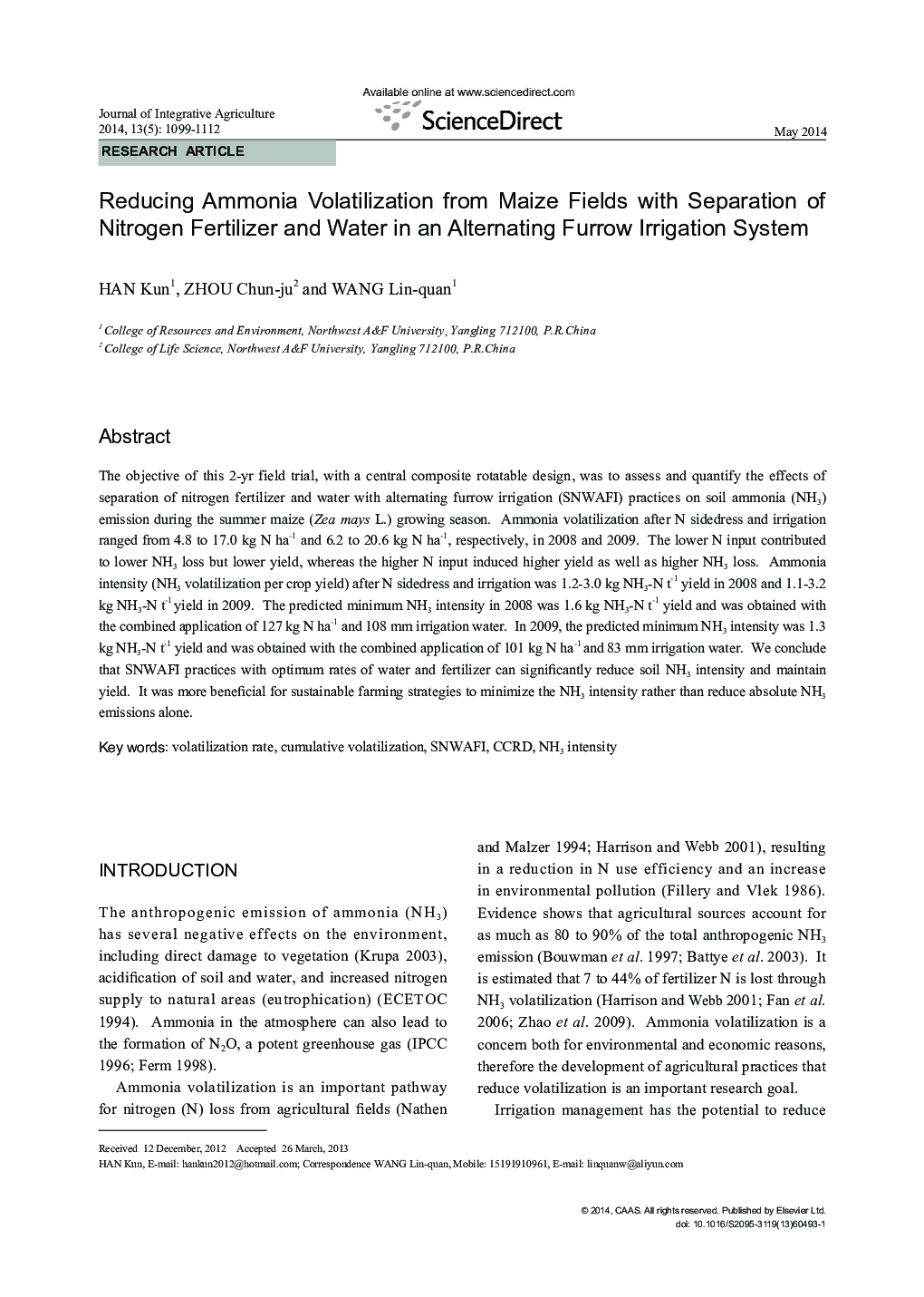| Article ID | Journal | Published Year | Pages | File Type |
|---|---|---|---|---|
| 4494527 | Journal of Integrative Agriculture | 2014 | 14 Pages |
The objective of this 2-yr field trial, with a central composite rotatable design, was to assess and quantify the effects of separation of nitrogen fertilizer and water with alternating furrow irrigation (SNWAFI) practices on soil ammonia (NH3) emission during the summer maize (Zea mays L.) growing season. Ammonia volatilization after N sidedress and irrigation ranged from 4.8 to 17.0 kg N ha−1 and 6.2 to 20.6 kg N ha−1, respectively, in 2008 and 2009. The lower N input contributed to lower NH3 loss but lower yield, whereas the higher N input induced higher yield as well as higher NH3 loss. Ammonia intensity (NH3 volatilization per crop yield) after N sidedress and irrigation was 1.2-3.0 kg NH3-N t−1 yield in 2008 and 1.1-3.2 kg NH3-N t−1 yield in 2009. The predicted minimum NH3 intensity in 2008 was 1.6 kg NH3-N t−1 yield and was obtained with the combined application of 127 kg N ha−1 and 108 mm irrigation water. In 2009, the predicted minimum NH3 intensity was 1.3 kg NH3-N t−1 yield and was obtained with the combined application of 101 kg N ha−1 and 83 mm irrigation water. We conclude that SNWAFI practices with optimum rates of water and fertilizer can significantly reduce soil NH3 intensity and maintain yield. It was more beneficial for sustainable farming strategies to minimize the NH3 intensity rather than reduce absolute NH3 emissions alone.
